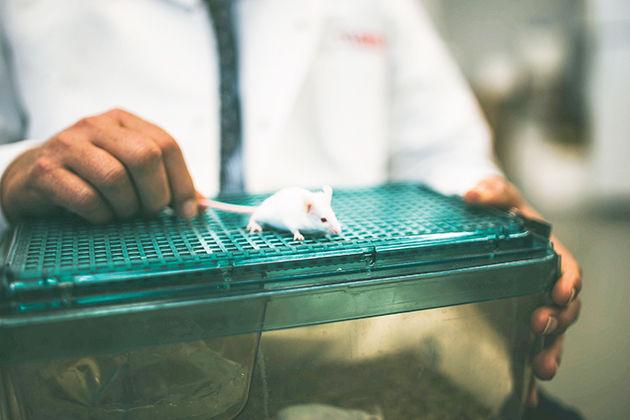There’s a massive mouse population at the Texas Institute of Genomic Medicine facility but no exterminator will be called — these mice are used for research at Texas A&M and across the world.
TIGM at Texas A&M boasts the world’s largest collection of mice. The thousands of rodents are used for all sorts of genetic research where the TIGM prepares hundreds of different mouse strains with different genetic traits for researchers in a variety of academic and industry backgrounds.
Andrei Golovko, the production manager at TIGM, handles all of the shipments and business in regards to the mice. He said the process of providing mice for research is rewarding.
“We have mice that have played a role in different kinds of diseases and some people use them for cancer models and research for metabolic diseases,” Golovko said. In the center of the TIGM facility stands a collection of embryonic stem cells and preserved sperm from C57 black mice — this place is known as the library. C57 mice are a type of common lab mice.
“The library contains over 430,000 clones that represent more than 10,000 genes — about 45 percent of the mice genome,” said Ben Morpurgo, TIGM program executive director.
Morpurgo said Aggies can get involved in the research TIGM conducts.
“We are an available resource for Texas A&M University,” Morpurgo said. “It was only this year where we had over 50 projects for the Texas A&M community, and a lot of those are making a mouse and pronuclear injection. That gives a quick and affordable way for Texas A&M investigators to research.”
In fact, the members of the TIGM team actually have a course for third-year veterinary school students where they can work with mice. TIGM hosts a summer program for high school students where they can learn about embryonic stem cells and genetic engineering. Most of the research for Texas A&M students is complimentary and is readily accessible to the researchers.
TIGM also represents the Texas A&M community internationally by preparing mice for groundbreaking research in international research institutions. So far, TIGM has shipped products to 24 countries worldwide.
What researchers do is extract the embryonic stem cells from the black C57 mice they use as a construct. They proceed to take an embryo donor that is an albino C57 mouse and ovulate them to inject the stem cells.
“The female would later give birth to black and white mice called Chimera, because they are a mix of the black and albino mice. A way we distinguish chimeras from albino are that albino mice have red eyes and chimeras have black ones. These chimera are bred with C57 mice and reproduced in large quantities,” Morpurgo said.
Creating mutations can be a hard task with a one in a million chance of success.
Jonathan Ballard is the scientist in charge of injecting the gene into the mice embryonic stem cells. He said that utilizing these stem cells are critical.
“Creating a success [with mutations] is a one in a million chance. With embryonic stem cells, we can work with millions of cells at a time, thereby increasing the chance of success,” Ballard said.
World’s largest mice collection drives research
October 20, 2015
Donate to The Battalion
Your donation will support the student journalists of Texas A&M University - College Station. Your contribution will allow us to purchase equipment and cover our annual website hosting costs.























